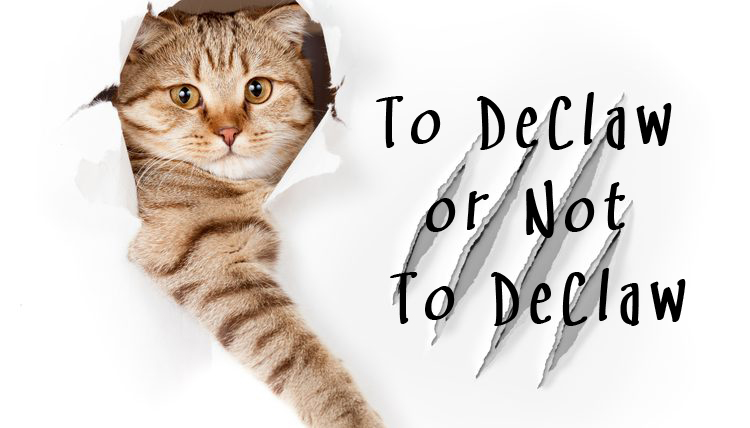To DeClaw or Not To DeClaw – The Humane Society of the United States opposes declawing cats except in rare cases when it is necessary for medical purposes, such as the removal of cancerous tumors from cats’ nail beds. The HSUS advises that it’s perfectly natural for cats to scratch, which they typically begin doing as eight-week-old kittens, and that declawing may contribute to problems that are more serious than shredded furniture.
To DeClaw or Not To DeClaw
Rather than planning to declaw their cats, pet parents can begin training kittens to use scratching posts and trim their nails when cats begin scratching. The HSUS notes that declawing can produce some very negative side effects for cats, including pain in the paw, infection, lameness, and back pain.

When cats’ claws are removed, this can change the way their feet meet the ground, resulting in the same painful feelings that human beings may feel when wearing uncomfortable footwear. In addition, improperly removed claws may begin to grow back.
Declawing also may contribute to nerve damage and result in the formation of potentially painful bone spurs. The HSUS also notes that some newly declawed cats begin to bite as a defense mechanism, putting themselves and anyone they encounter in danger.
The Humane Society of the United States opposes declawing cats except in rare cases when it is necessary for medical purposes, such as the removal of cancerous tumors from cats’ nail beds.
Article Compliments of MetroCreative.
About the Author
Discover more from Courageous Christian Father
Subscribe to get the latest posts sent to your email.

